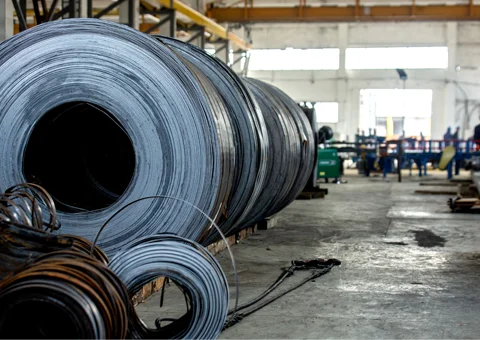Towards the week ending March 22nd, Steel Wire Rod prices in the USA dropped due to reduced demand and lower raw material expenses, including a 1.3% decrease in Pet coke FOB USGC (USA). Meanwhile, February reports indicated that the American Iron and Steel Institute (AISI) has noted a decline in steel imports compared to January. Economic challenges and geopolitical issues, like sanctions on exporting nations, are dampening demand for Steel Wire Rod, prompting cautious purchasing in anticipation of further price drops. High inventory levels and sluggish demand in automotive and construction sectors are contributing to a slow trading environment. Overall, weak demand across industries led to a 0.71% decrease in Steel Wire Rod prices.
Steel Wire Rod prices in the German domestic market declined due to factors such as cheaper raw materials and reduced demand before the Easter holiday in Europe. Germany saw a notable drop in raw material limestone prices in February, leading to surplus production by European producers. High inventory levels among European producers also contributed to price reductions. Trading activities in the German Steel Wire Rod market remained subdued due to continuous price declines and weak demand from major sectors. Overall trading in the region was slow, with small-scale and cautious transactions. Despite a 1.80% increase in automobile sales in February, reflecting a weekly decrease of 0.56% for Steel Wire Rod. Mills have not officially announced production adjustments to balance supply and demand, and demand remains slow, particularly from automotive and construction sectors.
The end of week marked a significant rise in Steel Wire Rod prices in China, attributed to lower inventory levels, post-Lunar New Year recovery, and adverse weather conditions. China, known for its strong automotive industry, is a major consumer of Steel Wire Rods, especially with the growing demand for lightweight materials in vehicle production to enhance fuel efficiency. Figures from the Department of Service Statistics of NBS of China and the China Federation of Logistics and Purchasing (CFLP) revealed a drop in the raw material inventory index to 47.4 percent in February 2024, indicating an ongoing reduction in key raw material stocks in the manufacturing sector. Freight costs from the USA to China surged by 14% weekly, consequently pushing up Steel Wire Rod prices. Industries in China also saw a notable profit increase, contributing to the overall price surge to 0.54% Ex Shanghai (China).
According to ChemAnalyst, global economic demand will increase on the outlook for Steel Wire Rod. The downstream sectors are expected to drive an increase in the demand. The surge in the demand for construction sector increasing purchase, is fuelling the growth rate of the Steel Wire Rod.

